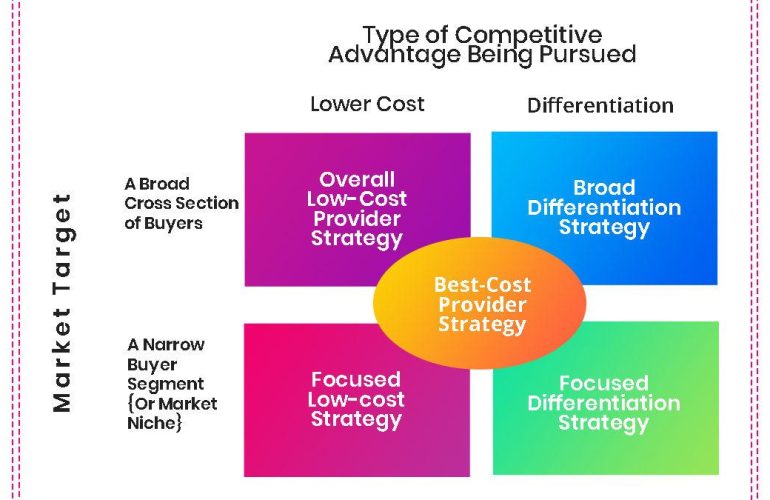In today’s rapidly evolving business landscape, organizations face unprecedented challenges and opportunities that demand innovative approaches to growth and development. One methodology that has gained significant traction in recent years is the Lean Startup approach, which emphasizes validated learning, scientific experimentation, and iterative product releases. By focusing on customer feedback and minimizing waste, companies can transition from traditional business practices to more agile frameworks that promote sustainable growth. This article explores the principles of Lean Startup methodology, its relevance in fostering entrepreneurial success, and how businesses can effectively leverage these principles to enhance their agility, reduce risk, and ultimately drive meaningful growth. Whether you are a startup founder or a leader in an established organization, understanding and applying these concepts can be pivotal to navigating the complexities of modern markets and achieving long-term success.
Table of Contents
- Understanding the Core Principles of Lean Startup Methodology
- Implementing Validated Learning for Continuous Improvement
- Market Experimentation Strategies to Identify Growth Opportunities
- Building a Customer-Centric Approach to Drive Innovation and Success
- Insights and Conclusions
Understanding the Core Principles of Lean Startup Methodology
At the heart of the Lean Startup methodology lies a commitment to agility and continuous improvement. This approach emphasizes the importance of building products that customers truly want, rather than making assumptions based on limited feedback. By adopting the “Build-Measure-Learn” feedback loop, businesses can transform their ideas into viable products through rapid prototyping. This iterative process enables entrepreneurs to validate their hypotheses early on, saving resources and time.
Key principles that define this methodology include:
- Validated Learning: Each iteration provides measurable insights that inform decision-making.
- Minimum Viable Product (MVP): The creation of a simplified version of the product helps test key assumptions with minimal effort.
- Pivot or Persevere: Based on customer feedback, businesses must decide whether to change courses (pivot) or continue refining their current strategy (persevere).
Incorporating these core principles fosters an environment of innovation and adaptability, enabling startups to respond to market demands effectively while minimizing waste and maximizing learning.
Implementing Validated Learning for Continuous Improvement
In the realm of innovation and growth, applying validated learning transforms the way businesses strategize and execute their ideas. This approach focuses on gaining insights through user feedback and real-world testing, ultimately leading to more informed decision-making. By defining clear hypotheses, businesses can engage in a cycle of building, measuring, and learning, allowing them to adjust their products or services based on tangible evidence rather than assumptions. This method not only accelerates the development process but also ensures that the end result is aligned with customer needs and market demands.
To successfully implement validated learning, companies should consider adopting the following best practices:
- Set Specific Goals: Establish clear objectives for what you want to learn.
- Utilize Prototypes: Create minimal viable products (MVPs) to test concepts swiftly.
- Conduct Iterative Tests: Regularly test and refine your offerings based on feedback.
- Embrace Data-Driven Decisions: Use analytics to inform your strategies and to pivot when necessary.
By fostering a culture that prioritizes validated learning, businesses can continuously evolve their offerings, enhancing customer satisfaction and driving growth. The transformation is not merely in the product, but in developing a mindset that encourages experimentation and adaptability. Implementing structured frameworks, such as the Build-Measure-Learn loop, further solidifies this initiative as organizations become adept at pivoting or persevering based on validated results.
Market Experimentation Strategies to Identify Growth Opportunities
To effectively uncover potential growth avenues, businesses can adopt a series of market experimentation strategies that promote rapid testing and feedback loops. By utilizing minimum viable products (MVPs), organizations can quickly gauge customer reactions without overcommitting resources. These strategies should aim to validate hypotheses through structured experiments designed to uncover actionable insights. Consider the following approaches in your experimentation framework:
- A/B Testing: Compare two variations of a product or service to determine which performs better.
- Customer Interviews: Engage with potential customers to derive qualitative data that can guide product development.
- Surveys and Questionnaires: Collect feedback on customer preferences to refine offerings and marketing strategies.
Integrating these methodologies into your market strategy enhances your ability to pivot based on real-time data and customer behavior. Furthermore, establishing a structured iteration process allows for continuous monitoring and adjustment. Here’s a simplified framework to visualize the experimentation cycle:
| Stage | Description |
|---|---|
| Hypothesize | Identify assumptions about customers or market conditions. |
| Test | Deploy MVPs to collect data. |
| Analyze | Review the results to determine if the hypothesis is validated. |
| Iterate | Refine the product based on feedback and retest. |
Building a Customer-Centric Approach to Drive Innovation and Success
Establishing a customer-centric approach hinges on understanding the needs and preferences of your target market. By integrating the Lean Startup methodology, businesses can foster a culture where innovation thrives based on direct customer feedback. This iterative process empowers teams to test hypotheses and pivot quickly, ensuring that product development aligns closely with customer expectations. Key benefits include:
- Rapid validation of ideas through Minimum Viable Products (MVPs)
- Reduced risk through continual learning and adaptation
- Enhanced customer engagement resulting in loyalty and advocacy
Furthermore, embracing this approach allows organizations to create value-driven solutions that resonate within the market. Utilizing tools such as customer development interviews and A/B testing, businesses can gather actionable insights that directly inform product enhancements. The following table outlines some effective strategies to implement a customer-centric Lean Startup framework:
| Strategy | Description | Outcome |
|---|---|---|
| Customer Interviews | Conduct in-depth discussions to uncover needs. | Refined understanding of customer pain points. |
| MVP Creation | Develop basic versions of products to test concepts. | Early validation with minimal investment. |
| A/B Testing | Test different variations of products/services. | Data-driven decisions on product features. |
Insights and Conclusions
harnessing the power of Lean Startup methodology presents a robust framework for businesses aiming to accelerate growth while minimizing risks. By embracing the principles of validated learning, iterative development, and customer-centric innovation, organizations can effectively navigate the complexities of today’s dynamic market landscape. The ability to pivot swiftly based on direct feedback ensures that resources are allocated efficiently, allowing for sustainable growth and a competitive edge. As businesses continue to evolve, integrating Lean Startup practices will not only foster a culture of agility and responsiveness but also empower teams to transform innovative ideas into successful products that resonate with customers. Adopting this methodology can ultimately lead to long-term success, positioning your company to thrive in an ever-changing environment. Embrace Lean Startup principles today and unlock the potential for your business to excel tomorrow.






